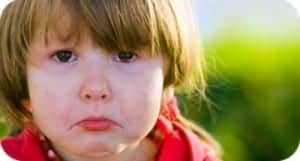 One of the issues that we face as children (and all the way through life) is recognising what we feel, when we feel it.
One of the issues that we face as children (and all the way through life) is recognising what we feel, when we feel it.
I have been practising meditation for years, yet just the other day I felt really flat and couldn’t name my feeling.
It was so frustrating and disorientating. I went for a walk and noticed where I could feel it (in my core) and eventually realised it was the energy of resentment (a form of anger). My logical brain wanted to work out what it was and why it was there, but my mindfulness experience taught me just to sit with it and let it come up to the surface. Fighting and resisting it was only going to fuel the flames.
As I walked, I realised that my body had been giving me signals for a long time (tension in the solar plexus and tiredness). It got my attention that day and I spent time processing and mindfully working with it. I am truly grateful for this experience and could see how years of events and suppressed emotions had contributed to that resentment.
I started to think about children and teens and how we spend a lot of time supporting their academic excellence, but the same attention isn’t offered to their emotional intelligence. Yet the emotions are the drivers. If only we taught children to process feelings in a more peaceful way when they experienced them, then perhaps they wouldn’t end up as adults with a mountain (rather than a molehill) of emotional baggage.
I smiled as I thought how many psychiatrists and psychotherapists might be redundant if children learnt these skills (eg there would be a lack of adult clients!)
Mindfully connecting to our feelings
One of the reasons why we run the Connected Kids programme, is to help children and teens connect to, and process feelings, in a supported and calmer way. However adults think that young people can’t connect to this (well if the adults can’t find the words, or have the awareness, how can kids?). I don’t believe this is true.
Connecting to the range of emotions
I believe that we can educate our children about the range of emotions available to us. Dr Bach identified 38 different emotions when he developed the Bach Flower Remedies, and this is a helpful start. However we want children to identify what that emotion means to them; helping them come up with the answer as it is much more empowering.
I came across a blog which had a wonderful tool to help children identify their emotions. You’ll see on this blog that the author encourages children to make a face that represents the feeling (and then they take a photo of the child). This becomes a helpful way for that child to see how they communicate that feeling through their body and facial expression.
I would take this one step further, asking that child to also notice where that feeling lives in their body. This helps them connect to the body so they notice the feeling when their body gives them the signal (a bit like potty training as I mentioned in my previous blog).
They can give that feeling a shape and colour and if you also get an outline of their body (drawing it on a large piece of paper or on the reverse of the photograph) they can mark the feeling on the drawing so they have that visual confirmation of where it lives in their body – in addition to feeling it inside.
With this useful tool, children and teens, can start to practise mindfulness of what their body and emotions are telling them. If they recognise the signals, then with further meditation practise like breath work or visualisation, they can help balance these feelings… identifying the root, reversing the stress response to feel calmer and becoming emotionally intelligent.
Now, wouldn’t that be an amazing world to live in where children become the adults who take responsibility for balancing their emotions rather than using alcohol, food, addictions or blaming others?
In anticipation of this, my apologies to the professional psychiatric community… 🙂




I would like to know more about this, what ages?
What is the cost of the online course or would you recommend the calm kids book?
Thank you
Nerina
HI Nerina
The Calm Kids book covers toddlers to teens and is the basic book for getting you started. The online course costs £149 or £139 (the latter price is without the Calm Kids book though it is required reading … it’s just quicker for people outside the UK to get the book locally as it has taken 6 weeks sometimes for it to arrive). Hope that helps?
Thank you lorraine for all your shared thoughts and tips plus your meditations. These are all so appreciated.
It’s my pleasure x